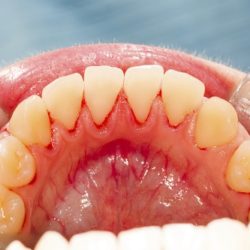
Gum disease results from the accumulation and inflammation of harmful mouth bacteria. The disease is most prevalent in individuals with poor oral hygiene. However, given its painless nature during the initial stages, it may be difficult to tell whether you have gum disease unless with early diagnosis.
Early Gum Disease
Gum disease starts as an inflammation of the gums, also called gingivitis. The most common symptom of gingivitis is bleeding of the gums when you brush your teeth. Your teeth may also look discolored due to the accumulation of plaque. Plaque comprises a mixture of food debris and bacteria. As gingivitis progresses, your gums will start to pull away from your teeth, cousin a condition known as gum recession, forming pockets between your teeth and gums. These pockets harbor bacteria and worsen the disease.
Advanced Gum Disease
If untreated, gum disease will continue to progress from gum recession, and you will start to experience bleeding and pain. Your teeth will also become loose at this point due to the recession and bone loss. The condition may further worsen and damage the connective tissues that hold your teeth in place. The result will be severe pain when you chew food coupled with bad breath and a foul taste.
What To Do If You Experience Severe Pain
Gum disease is detectable at an early stage, even before you experience pain as a symptom. This is why we encourage routine checkups for early diagnosis. However, if you come to us with painful gums, we will start by assessing your symptoms and do an oral examination to check your gums[[[char:39]]] status. We may also do an X-ray to check the status of your bones. After that, we will check the pockets and remove plaque from your teeth through professional cleaning, and administer antibiotics. While noting the symptoms of gum disease and seeking treatment, the best way to keep your mouth healthy is practicing good oral hygiene and scheduling professional and regular checkups. For more details on gum disease, contact our office.

